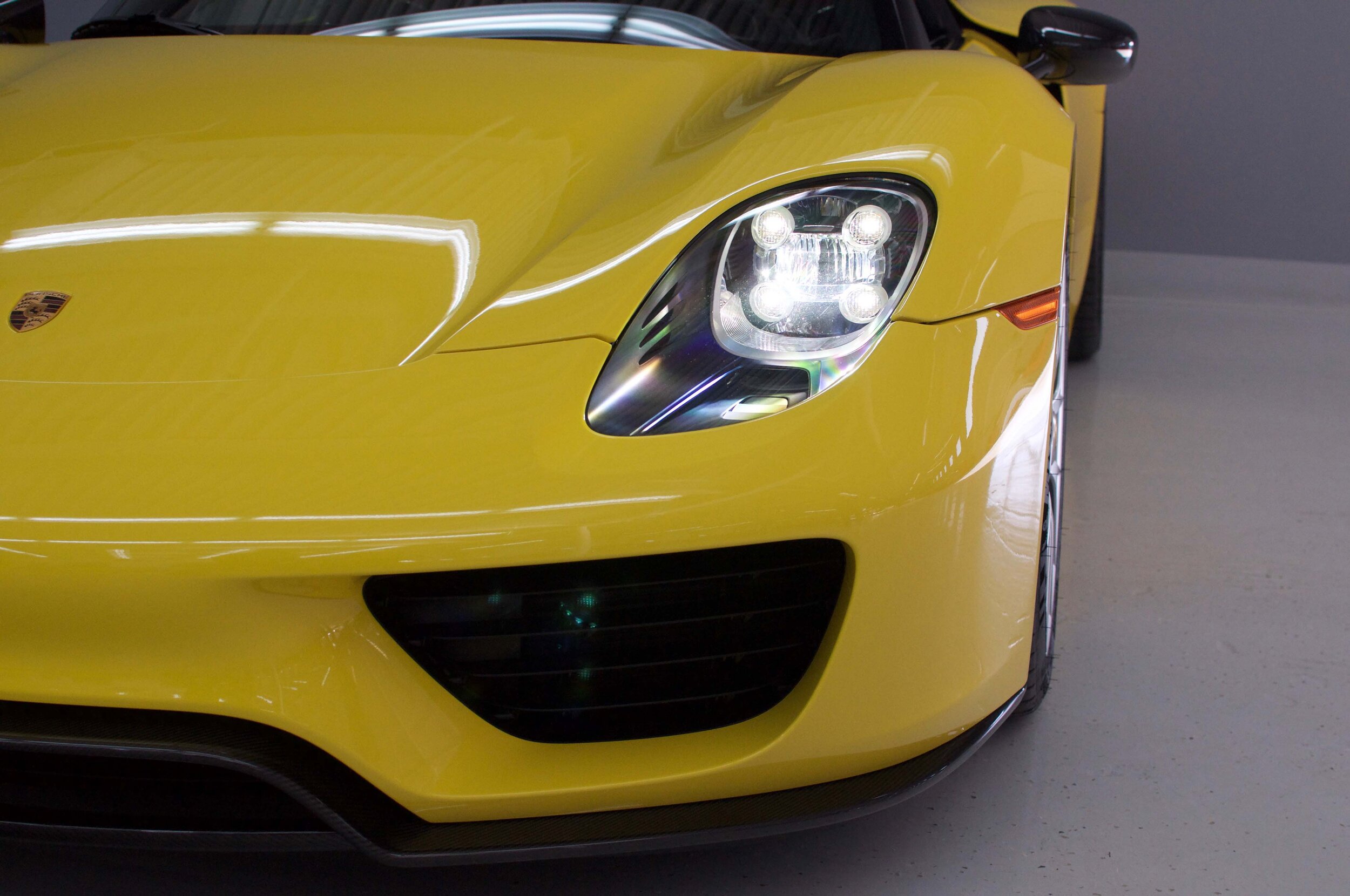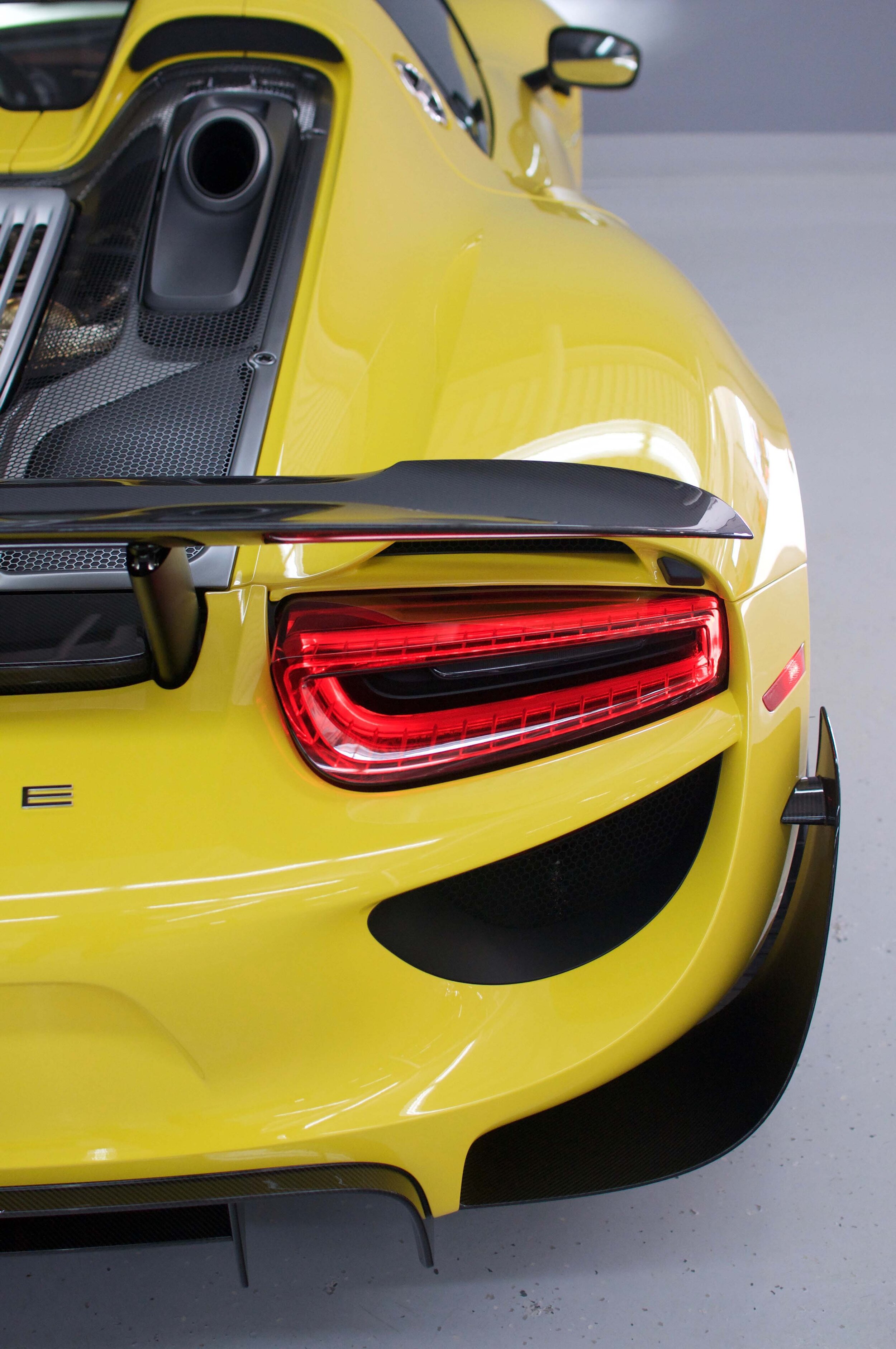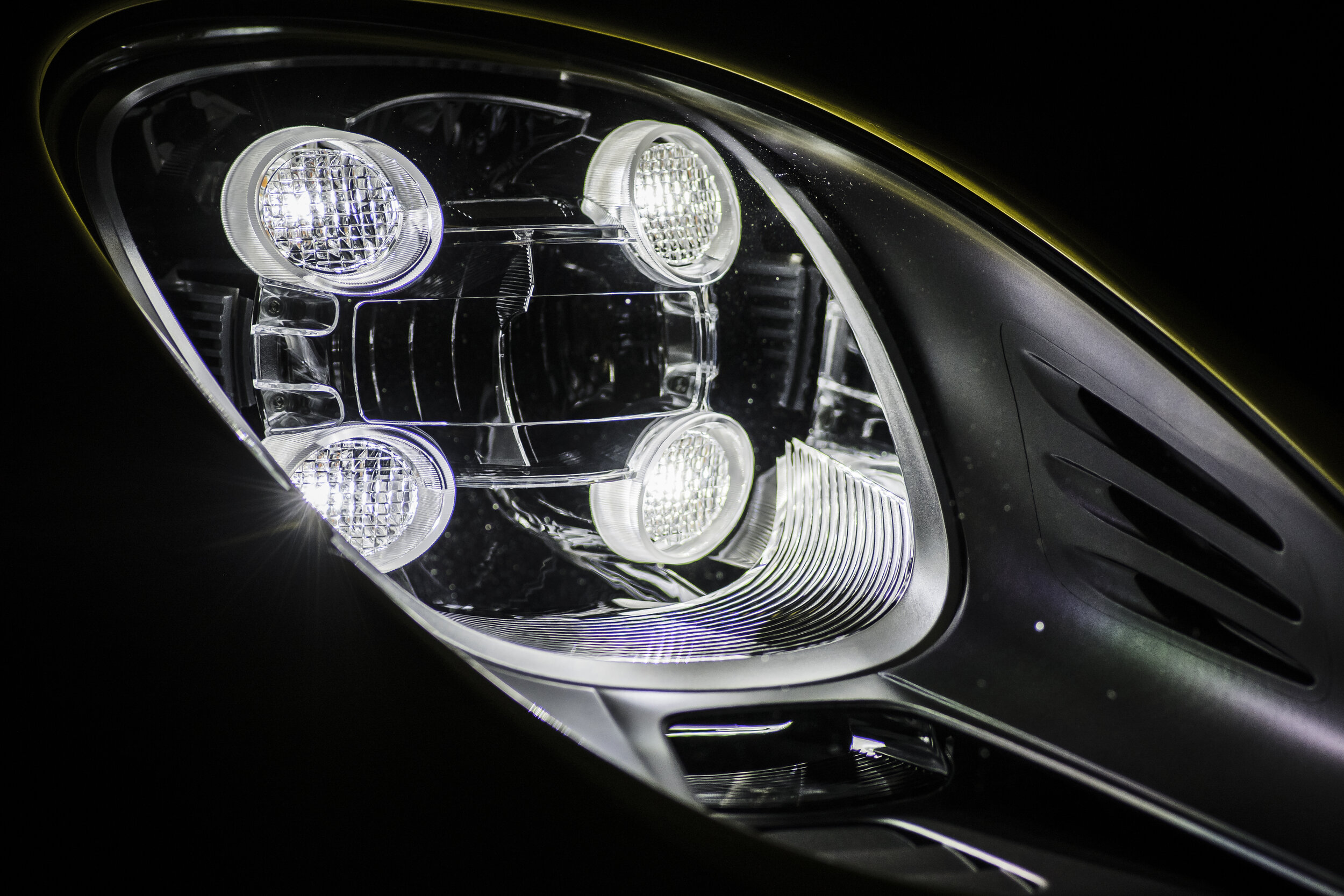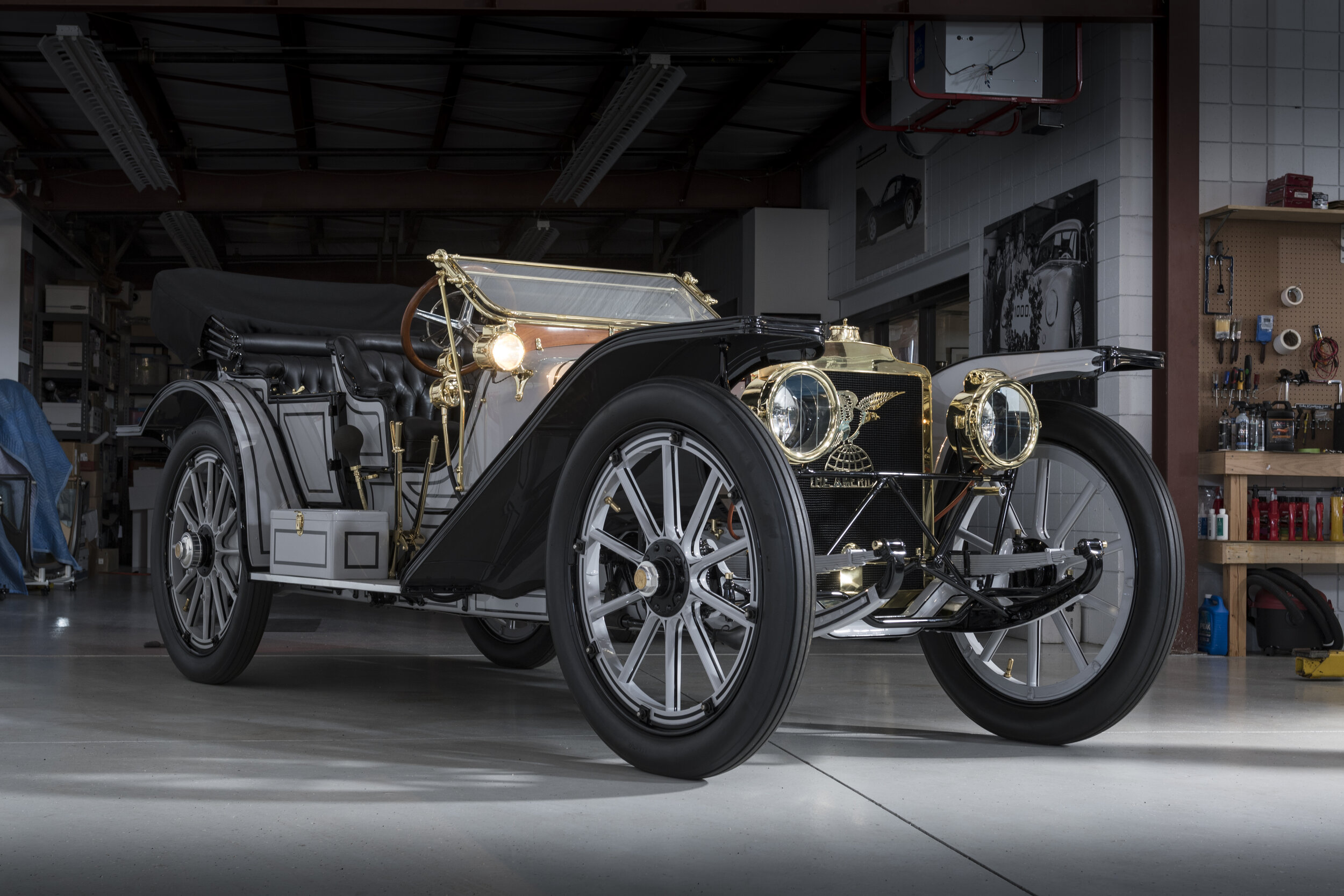2015 Porsche 918 Spyder







Lights: Four-point LEDs & Bi-Xenon Projectors
LED headlights first appeared on automobiles when Audi launched the A8 in 2004. Although more expensive than a standard halogen bulb, LEDs consume far less energy, create less heat, and are much brighter. Due to their small size, they can be arranged into multiple shapes to accentuate the styling of the automobile. In 2009, the Cadillac Escalade Platinum became the first vehicle with all - LED headlamps in the North American Market. Other advancements in the LED market included adaptive high beams, with the ability to turn off when other cars are coming in the other direction, and glare free LEDs.
Porsche was founded in 1948, building four-cylinder cars with 40 horsepower. Nearly 70 years later, the 2015 ground breaking design for the hybrid-V8 powered 918 was unveiled with nearly 900 horsepower, by far the fastest car the company had ever released. One of the first noteworthy designs for a hybrid electric/ gasoline powered super car.
The 918 was the first car in the Porsche range to feature ‘four point’ LED daytime running lights. For reasons of efficiency, a halogen bulb only converts three percent of its energy into light. LEDs on the other hand convert 20% of energy into light. Combined with xenon headlights, the 918 provides the perfect amount of light for any driving condition. Porsche had the technology to create LEDs that pivot, but doing so would’ve added more weight to the unit, which saves 1.5 kg in total. Porsche continues to use the four point LED system in their design language, with their Porsche Dynamic Light System (PDLS) option. Top of the line models feature PDLS, with more inexpensive models including them as a premium option. The headlights also made their way to the racetrack with Porsche’s World Endurance Championship car, the 919 Hybrid. The four-point headlights have a range of 800 meters - with the 919 traveling at an extremely high rate of speed, the LEDs serve as additional safety features in mixed weather conditions, and with slower vehicles on the track.
Despite having nearly 900 horsepower, the 918 Spyder emits 70g/km of CO2, making it more environmentally friendly than a Toyota Prius. Launched in 2013, it was the most technologically advanced Porsche ever made. With the use of hybrid technology, it set a new precedent for hyper cars of the future.
The all-wheel drive 918 Spyder features a mid-engine 4.6-liter naturally aspirated V8 mated to two electric motors that help propel the car 0-60 in 2.5 seconds. This speed is aided by Porsche’s 7-speed dual clutch transmission (PDK), which offers lighting fast gear changes. This specific 918 has been equipped with the Weissach package, which reduces weight by 100 pounds. Specific features include the addition of magnesium wheels, a lighter brake design, ceramic wheel bearings, and titanium bolts for the chassis. There are also add-on parts, mainly to aid aerodynamics, and even a thin film coating for the exterior instead of regular paint.
Specifications:
Configuration: Longitudinal Mid-Engine
Horsepower: 600 at 8,700 RPM (V8); 275 hp (Battery) 875 combined
Torque: 391 lb/ft @ 6600 RPM (V8); 553 lb/ft (Battery); 944 lb/ft. combined
Max RPM: 9,150 RPM
Transmission: 7-Speed PDK Automatic
Base Engine and Cylinders: 4.6 L V8 + 12-Cell, Liquid-Cooled 6.8 kW·h Lithium-Ion Battery
Electric Range: 12 miles
0 - 60: 2.2 seconds
Curb Weight: 3,600 lbs
Lights: Four-point LEDs & Bi-Xenon Projectors


















